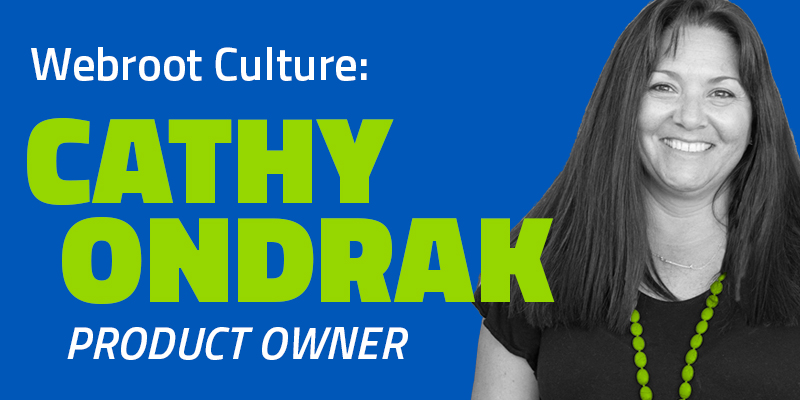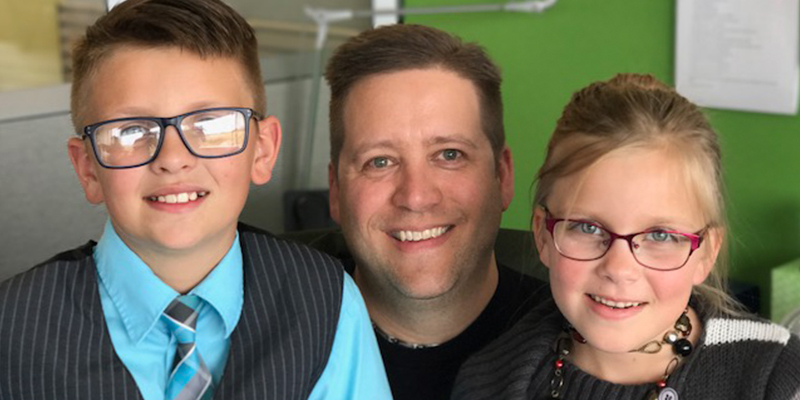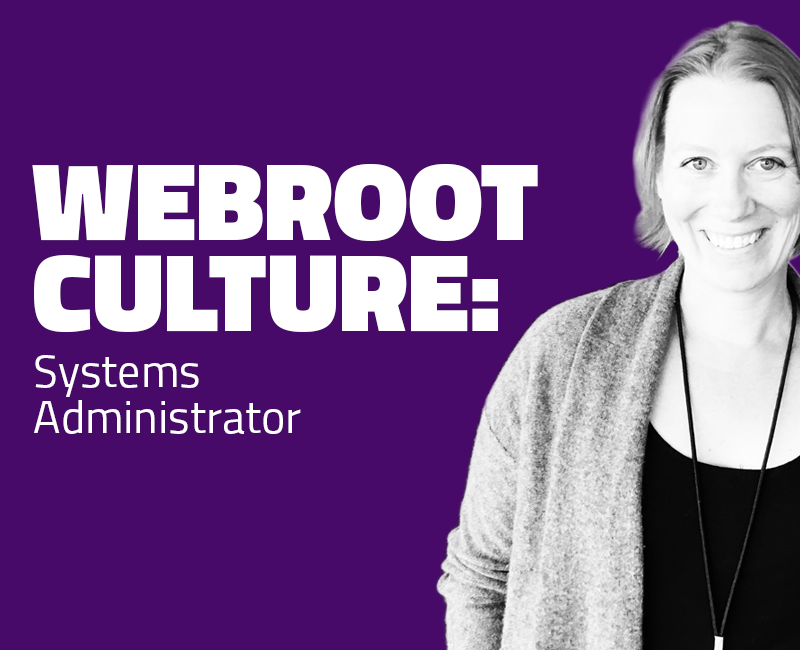While one-click shopping on Amazon (or Webroot.com, for that matter) seems super easy when you’re the consumer, there are a lot of complex strategies and processes going on behind the scenes.
We chat with Cathy Ondrak, product owner for Webroot.com, to get a glimpse behind the curtain. In her role, Cathy works with developers, business analysts, and other stakeholders on a daily basis to ensure Webroot customers’ needs are being met online.
Tell us a bit about yourself.
I have three amazing kids—ages 9, 11, 13. We’re just getting to the teen years, which scares me to death. When I’m not working, I’m probably ushering my kids to one of their various activities. My life revolves around them; from baseball, softball, and soccer to basketball, parkour, or art activities, they stay busy and keep me on my toes. I also lead my nine-year-old’s Girl Scout troop and participate in my kids’ school accountability committee (SAC) meetings.
I was born in North Carolina (go Duke!) My parents moved us to Aurora, Colorado when I was a year and a half old. They still live in my childhood home. My sister and her family live about 2 miles from me, so you can regularly find my family attending one of the grandkids’ activities. (We travel in a large pack, and our kiddos always have a cheering section.)
How did you get into tech?
I began my career in public relations, moved to marketing, then product management. I worked on bringing US WEST Wireless to market a long time ago, which was my entry into tech. While at US WEST, I managed their website and eventually moved into a product manager position for their first wireless internet solution, BrowseNow. It was a very exciting time, but nothing like things are now. Everything was text-based, black and white, and not even a little pretty.
What does a day in your life at Webroot look like for you?
As the product owner for Webroot.com, I’m constantly checking emails, attending meetings, and collaborating with various internal teams. Beyond that, I oversee the web developers’ work and stay in constant communication with them. I work with developers, business analysts, and stakeholders daily to ensure deadlines are met and projects are completed as quickly as possible. We work in an agile environment, so we try to deliver solutions quickly and enhance as we need to. It’s pretty exciting to see the changes over the years when you have time to look back.
Why do you like working at Webroot?
The thing I like best about Webroot is the people. Working with driven and intelligent people make what we do great and make me value the relationships I’ve formed. The other thing would be watching the continued success of the teams as we grow. The amount of work that flows through our team each day is amazing. The most rewarding thing is seeing how far we’ve come since we started! It’s inspiring to witness whole organization working together to bring new products to market.
Do you interface with external customers?
My day-to-day is filled with internal customers and teams at Webroot—mostly marketing teams who work with us to enhance the website and online user experience, and also provide more flexibility to sell our products.
Any advice for other women in tech?
The only advice I have applies to everyone, regardless of field or gender: do what you love, value the people, and success will come naturally. We all have control of our own outcomes, so be open, honest, and flexible. And for other Webrooters reading this, attend the Women of Webroot meetings, get to know your fellow colleagues, and enjoy every minute of it!
What’s the biggest lesson you’ve learned from working in the field?
My biggest lesson from the field was something someone told me years ago for when you’re trying to solve problems or work with developers. Ask yourself, “What are 3 possible solutions to anything you are doing?” Having options ready helps you think things through, so you can evaluate multiple possible solutions to determine which one is the most viable for your situation and resources. Options are key.
If you’re interested in a job at Webroot, check out our careers page, www.webroot.com/careers.












